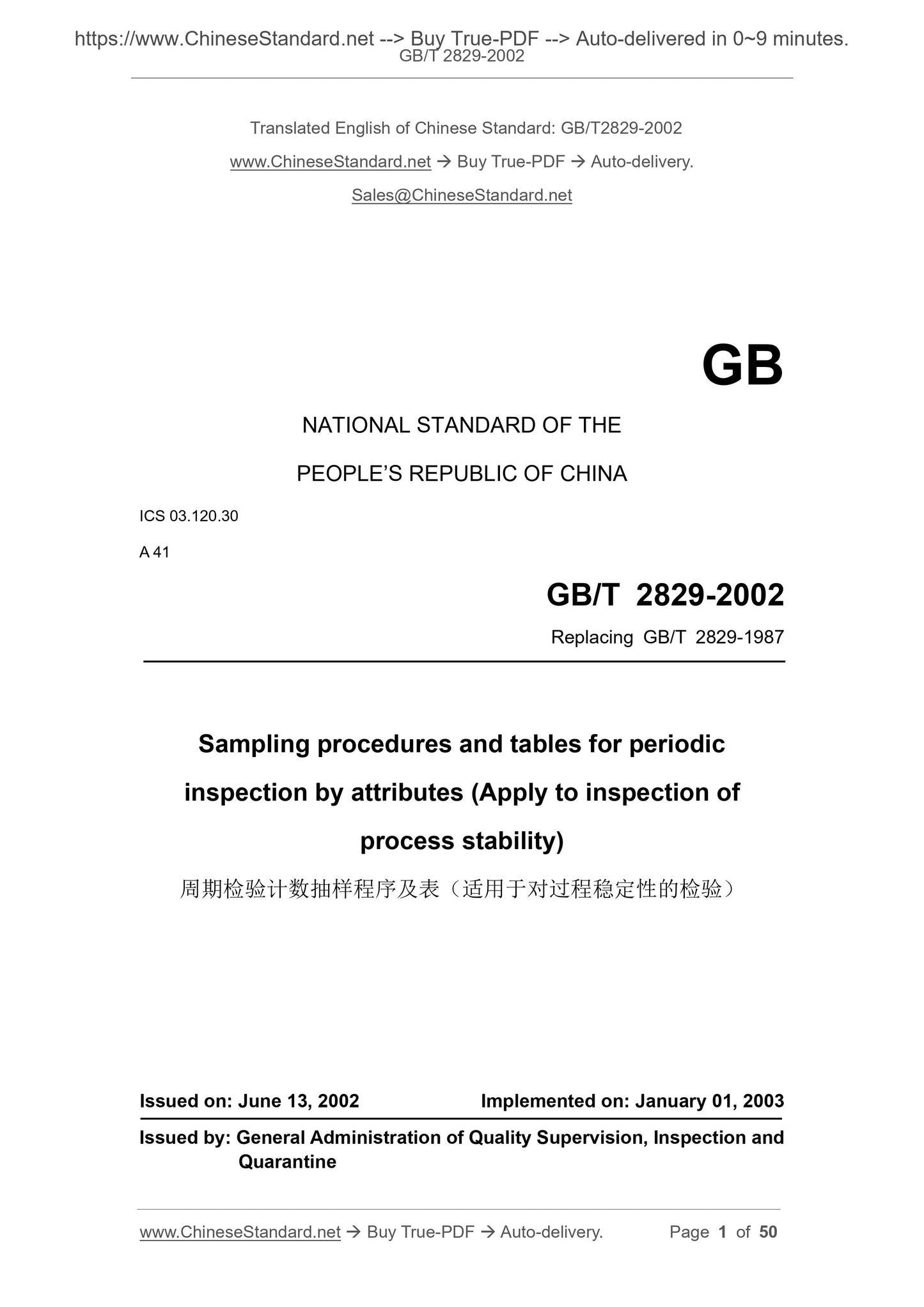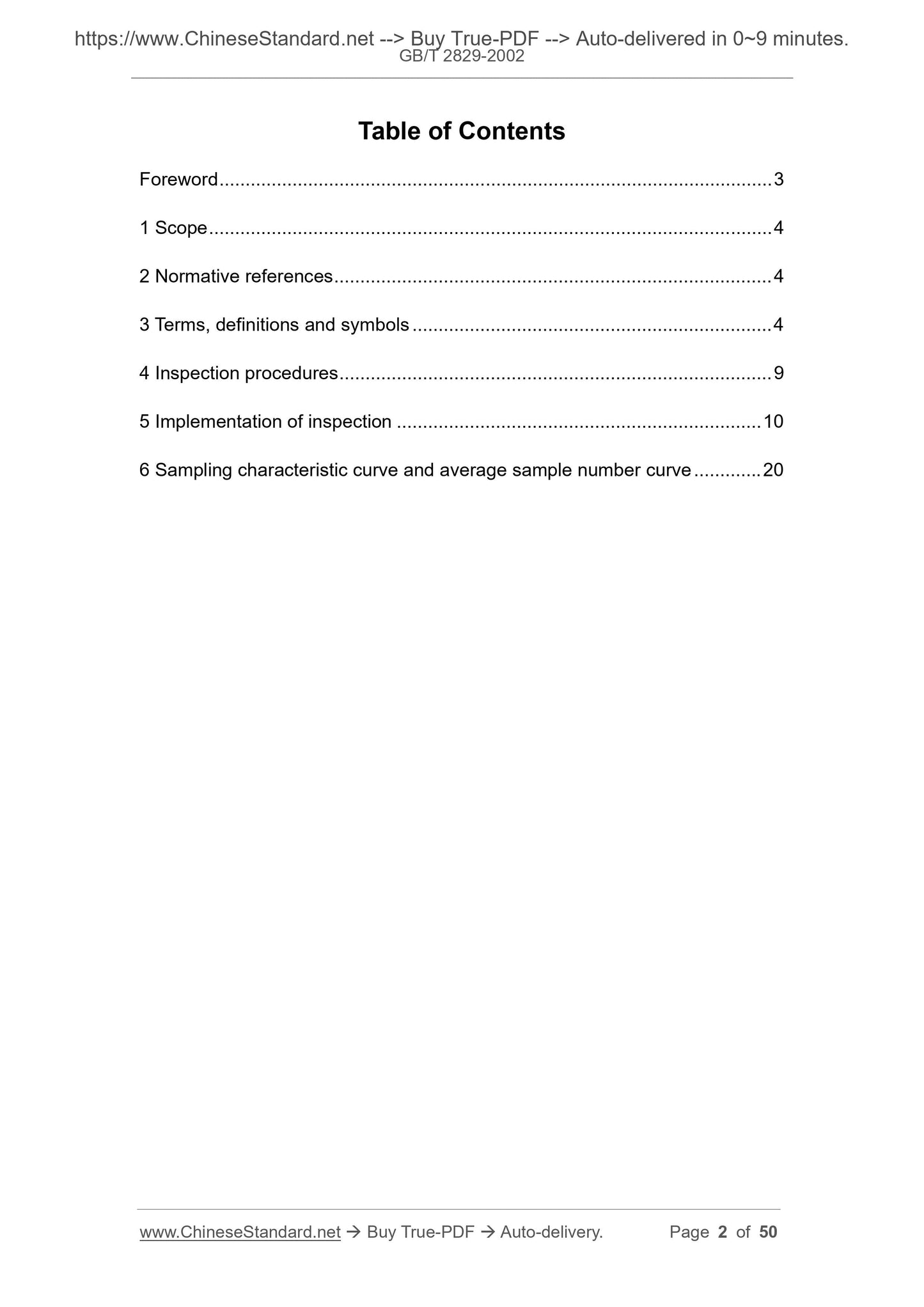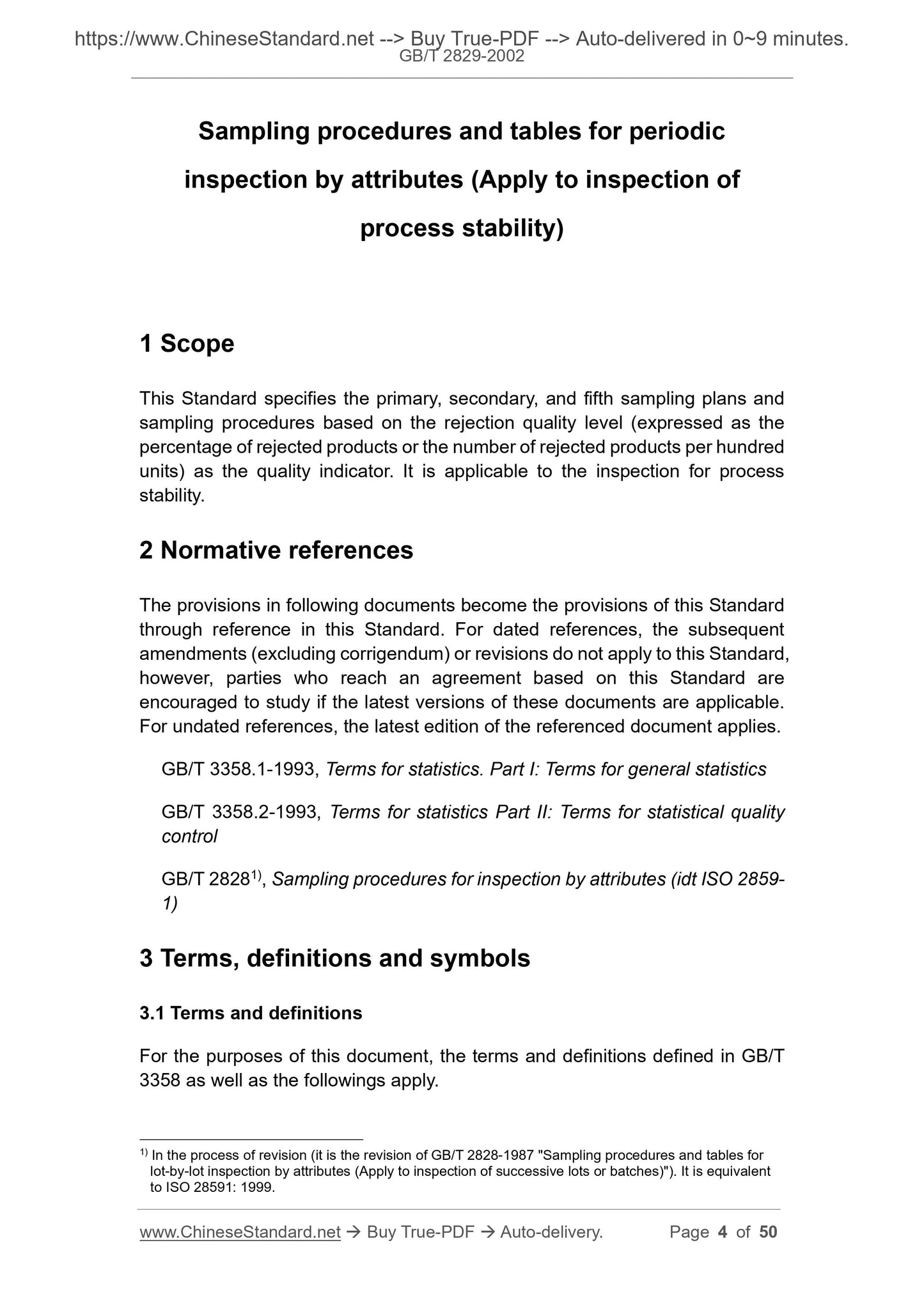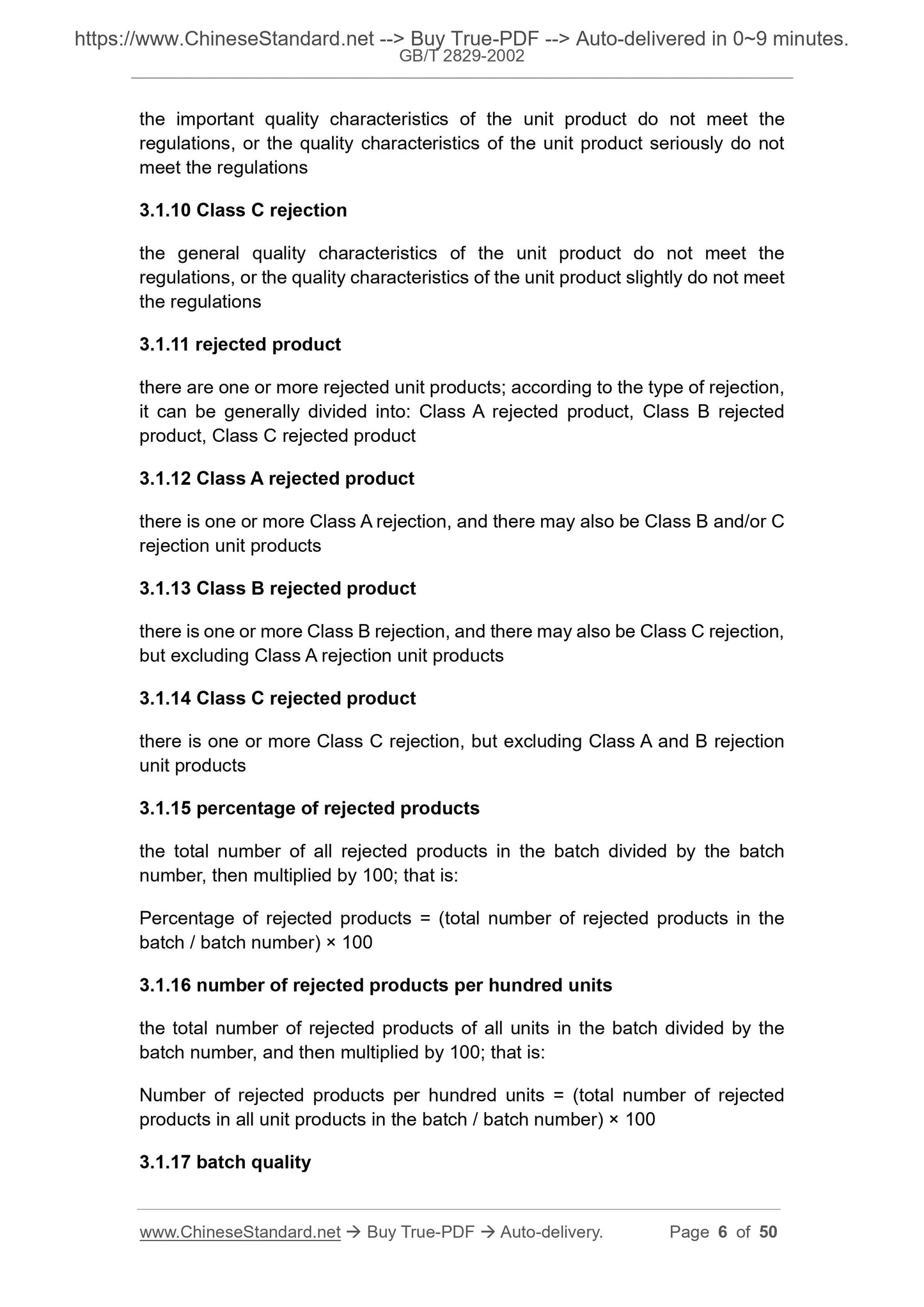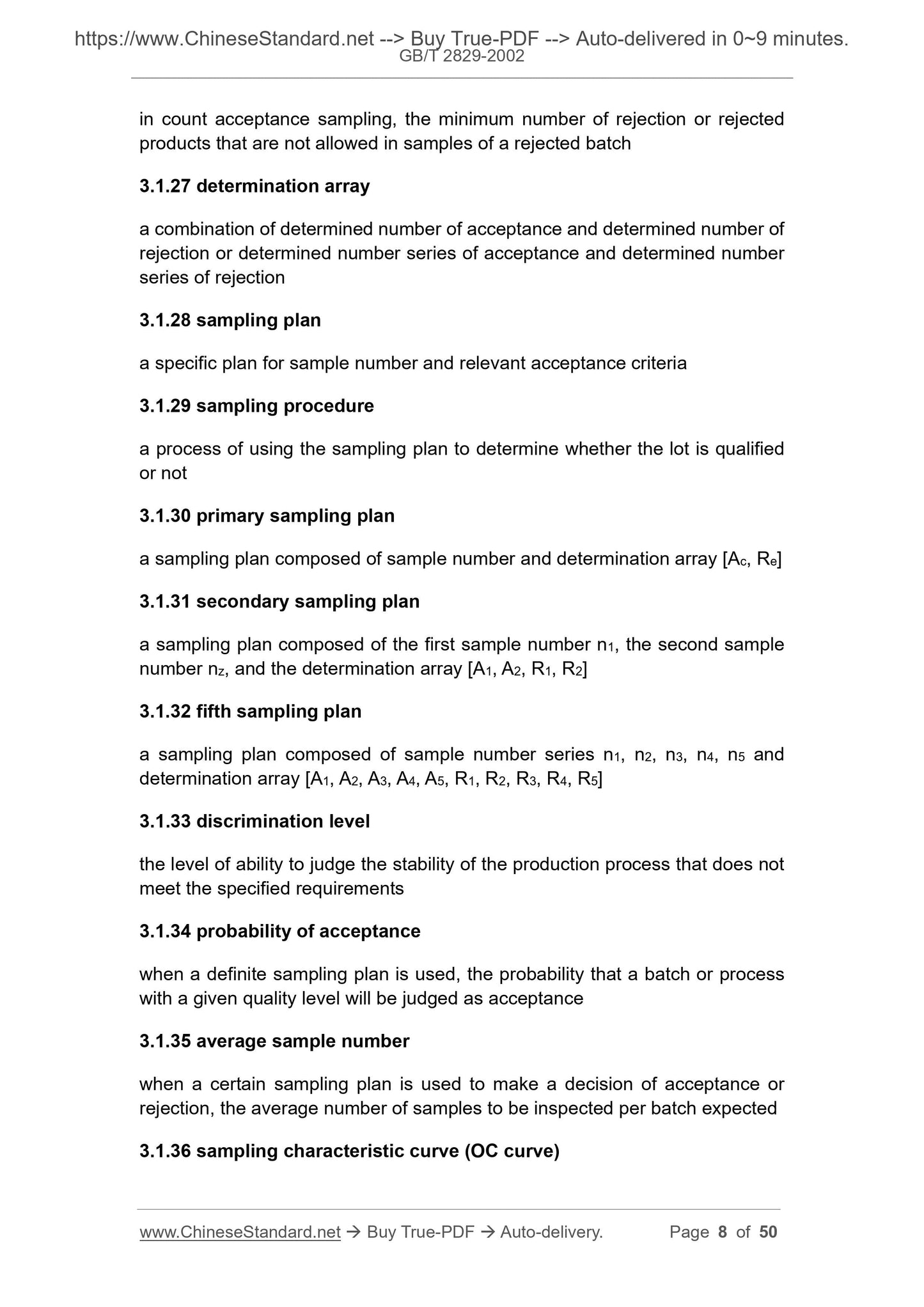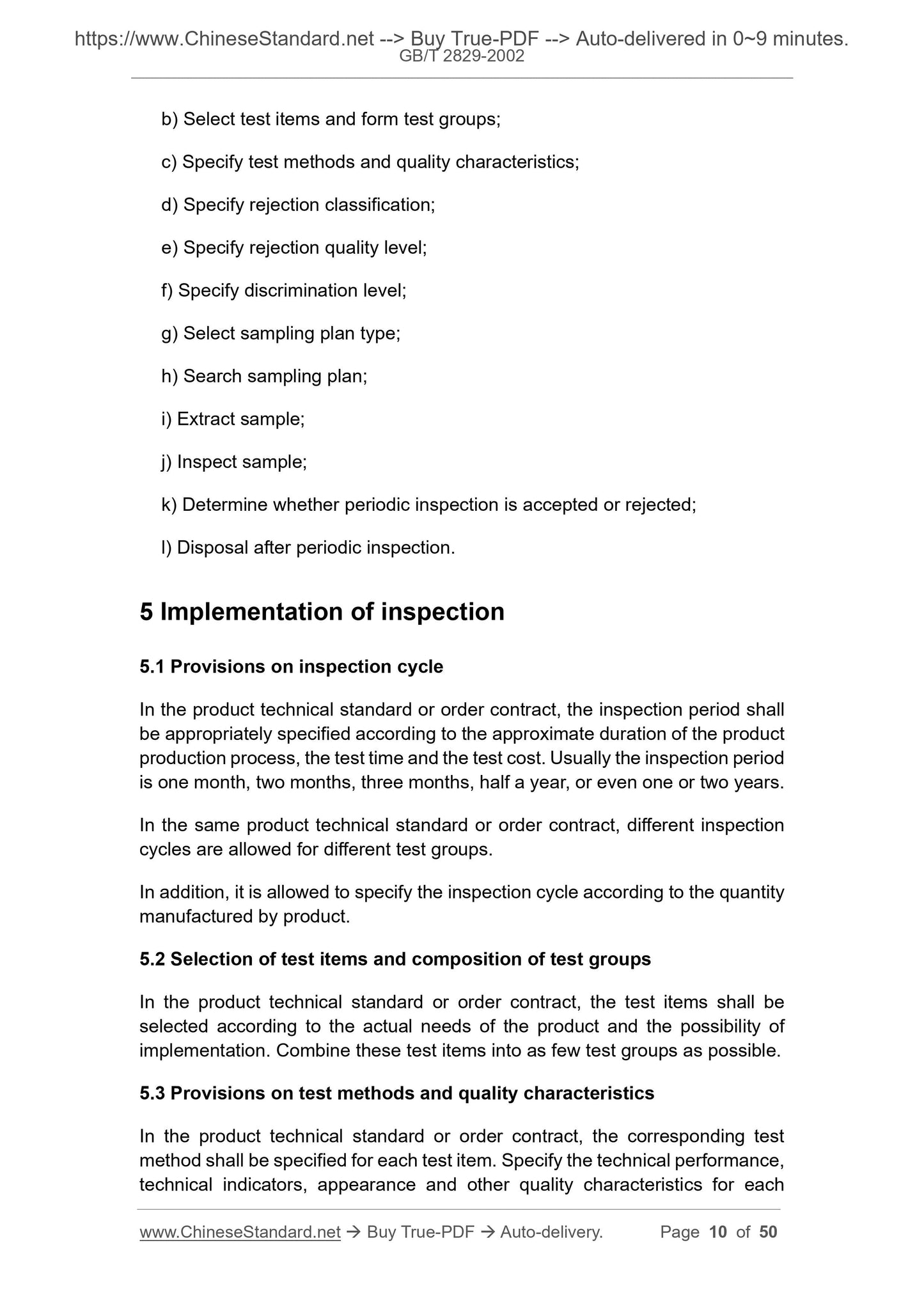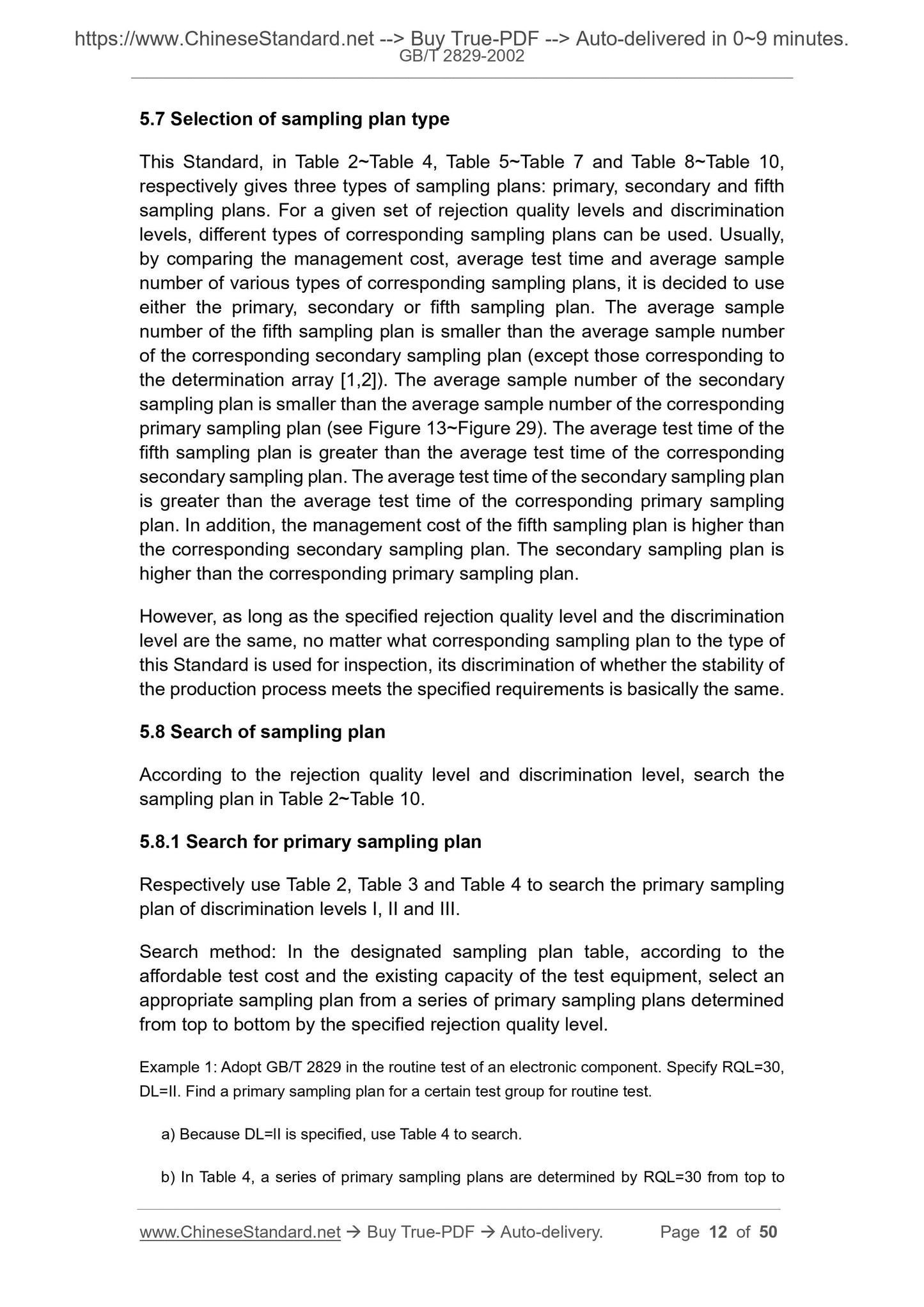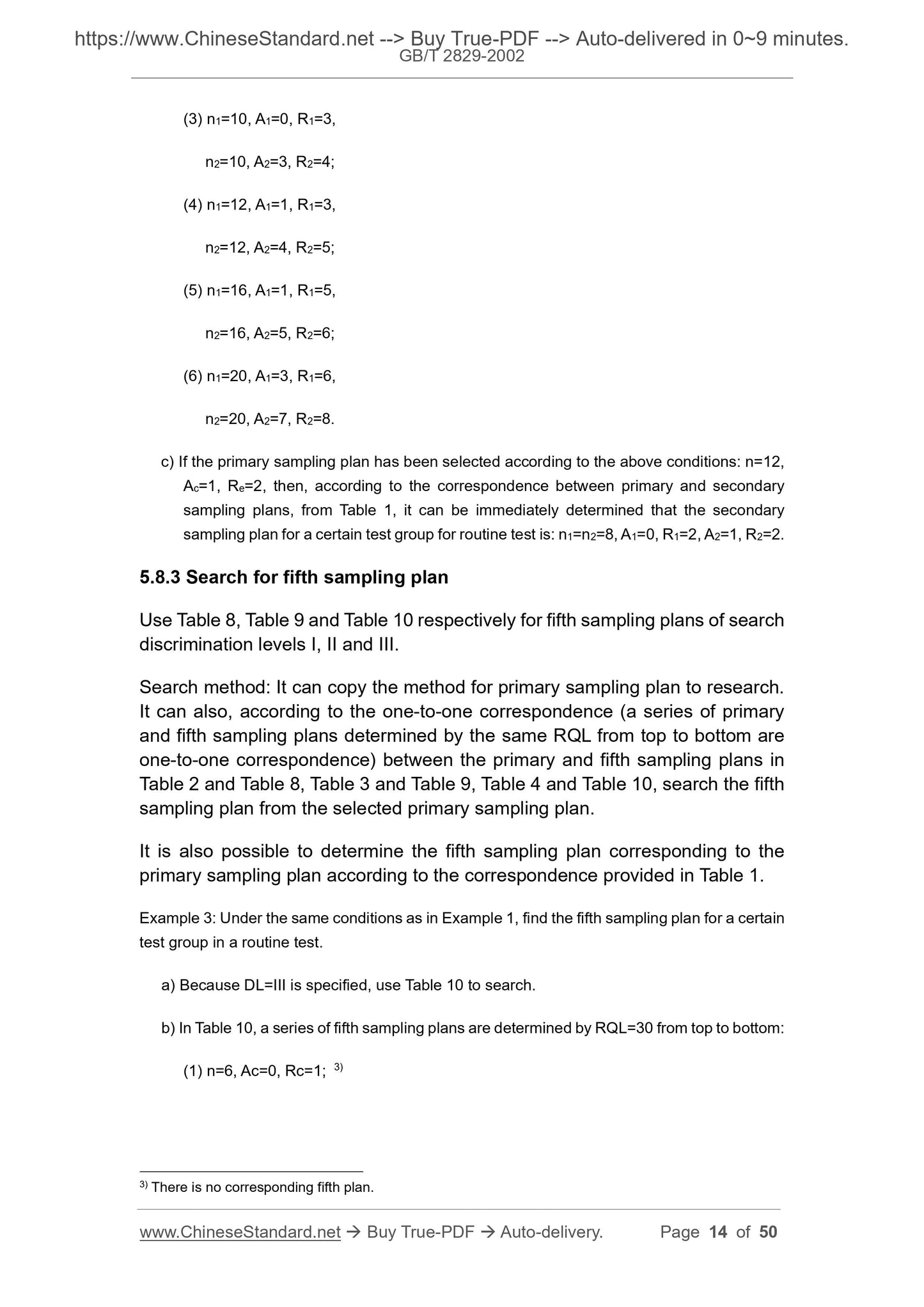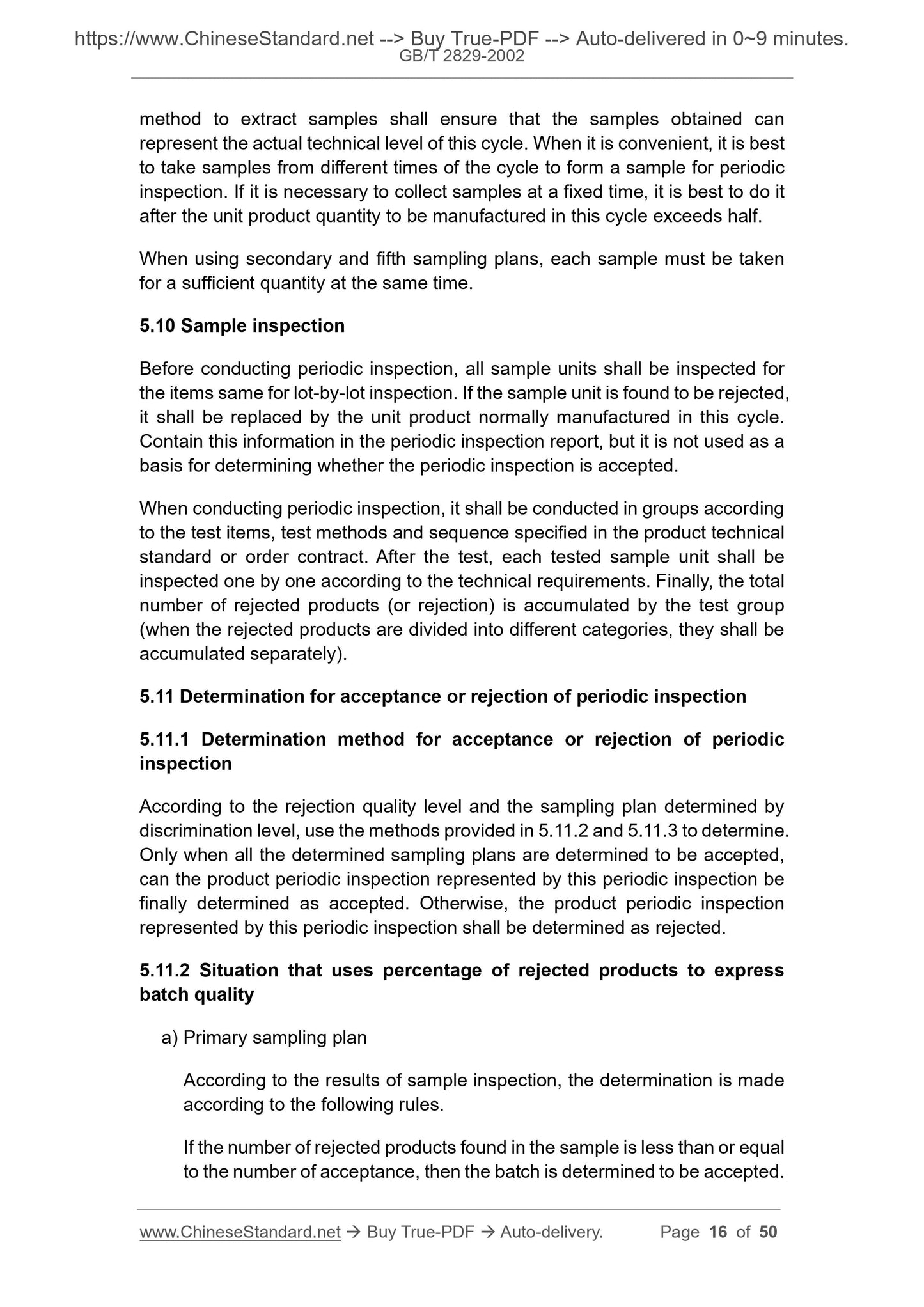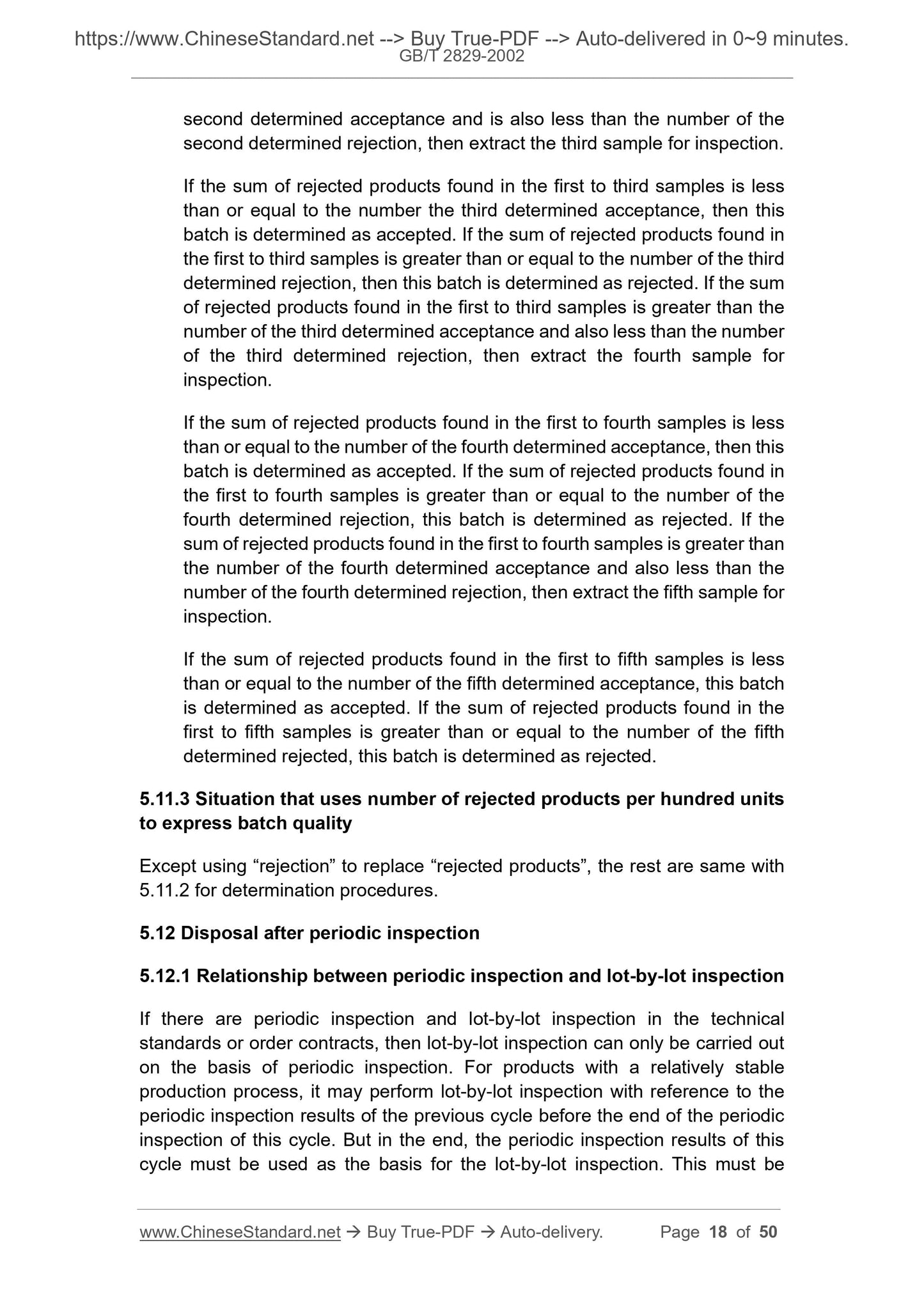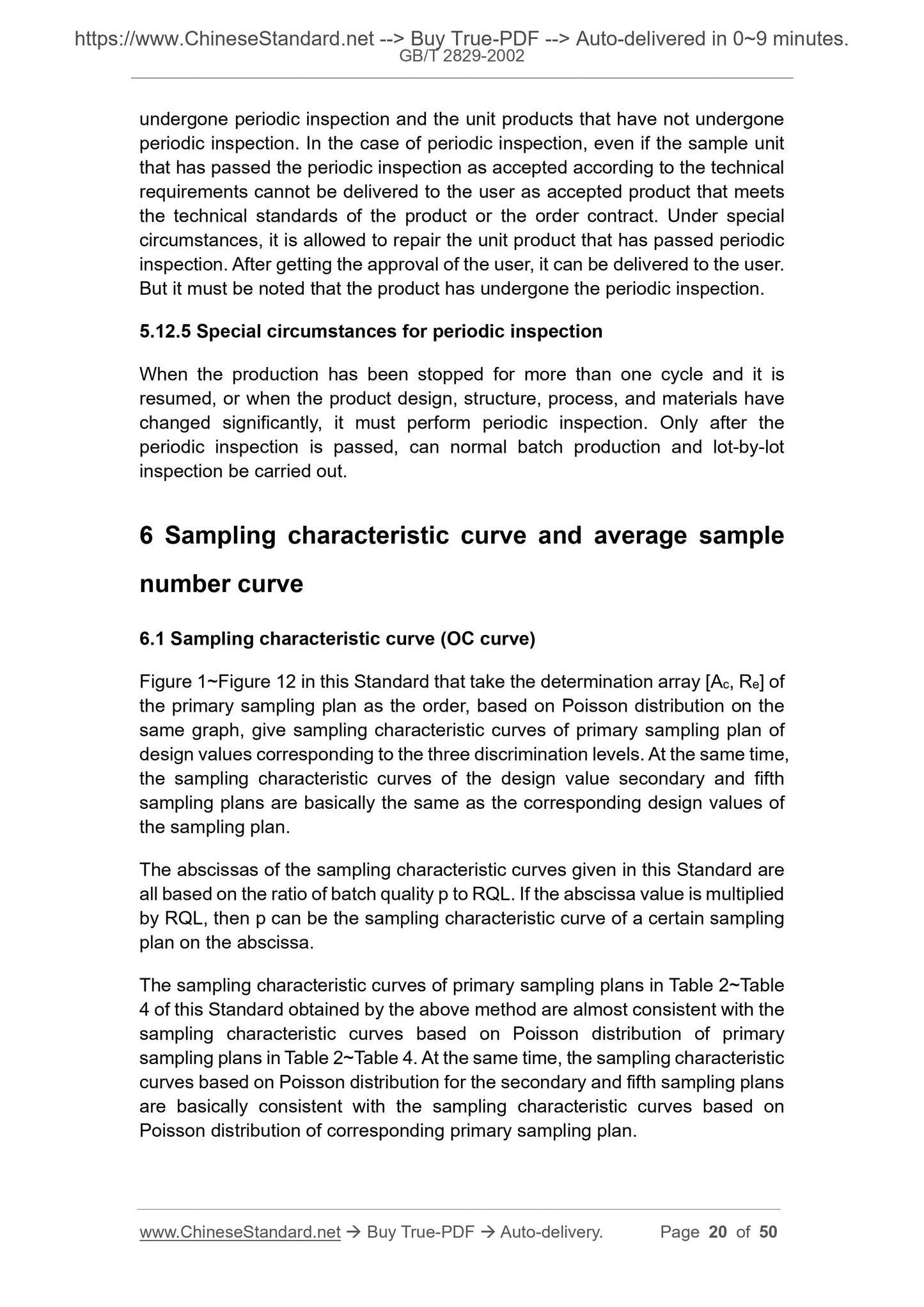1
/
of
11
www.ChineseStandard.us -- Field Test Asia Pte. Ltd.
GB/T 2829-2002 English PDF (GB/T2829-2002)
GB/T 2829-2002 English PDF (GB/T2829-2002)
Regular price
$225.00
Regular price
Sale price
$225.00
Unit price
/
per
Shipping calculated at checkout.
Couldn't load pickup availability
GB/T 2829-2002: Sampling procedures and tables for periodic inspection by attributes (apply to inspection of process stability)
Delivery: 9 seconds. Download (and Email) true-PDF + Invoice.Get Quotation: Click GB/T 2829-2002 (Self-service in 1-minute)
Newer / historical versions: GB/T 2829-2002
Preview True-PDF
Scope
This Standard specifies the primary, secondary, and fifth sampling plans andsampling procedures based on the rejection quality level (expressed as the
percentage of rejected products or the number of rejected products per hundred
units) as the quality indicator. It is applicable to the inspection for process
stability.
Basic Data
| Standard ID | GB/T 2829-2002 (GB/T2829-2002) |
| Description (Translated English) | Sampling procedures and tables for periodic inspection by attributes (apply to inspection of process stability) |
| Sector / Industry | National Standard (Recommended) |
| Classification of Chinese Standard | A41 |
| Classification of International Standard | 03.120.30 |
| Word Count Estimation | 41,491 |
| Date of Issue | 2002-06-13 |
| Date of Implementation | 2003-01-01 |
| Older Standard (superseded by this standard) | GB/T 2829-1987 |
| Quoted Standard | GB/T 3358.1-1993; GB/T 3358.2-1993; GB/T 2828 |
| Issuing agency(ies) | General Administration of Quality Supervision, Inspection and Quarantine of the People Republic of China |
| Summary | This standard specifies a substandard quality level (percentage nonconforming use or every few hundred units expressed unqualified) as quality indicators of primary, secondary, five sampling plan and sampling procedures, which applies to the stability of the process test. |
Share
